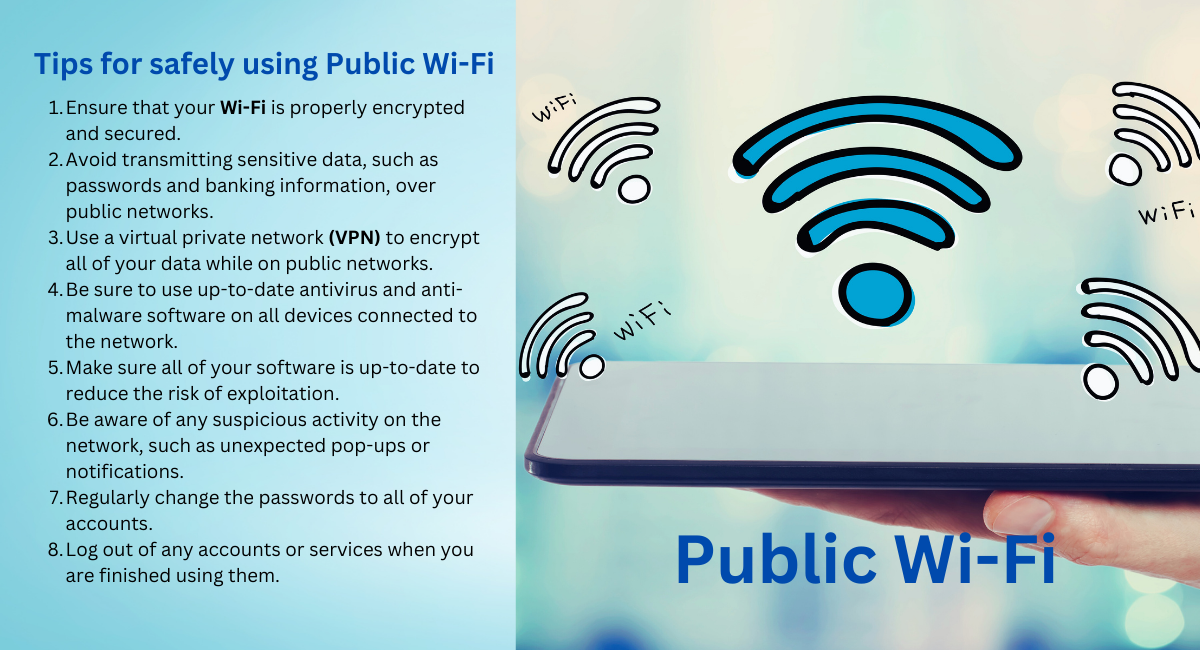Public Wi-Fi
Public Wi-Fi is a type of wireless network that is freely available to the general public. It is typically provided in public areas such as cafes, airports, and libraries, and is typically unsecured and open to anyone who wishes to access it. It can be used to access the internet, send and receive emails, and use applications such as streaming services. While public Wi-Fi is convenient, it is important to be aware of the risks associated with using it, as it can be vulnerable to hackers and other cybercriminals.
Risks of Using Public Wi-Fi Networks for Businesses
Public Wi-Fi networks provide a convenient way for businesses to access the internet, but they also come with a number of risks. One of the most common risks is that of data interception. If a hacker is able to gain access to the network, they could intercept any data being transmitted, including sensitive business or customer information. In addition, public Wi-Fi networks are vulnerable to man-in-the-middle attacks, which can allow attackers to gain access to user accounts, usernames, and passwords. Finally, businesses should be aware that public Wi-Fi networks can be slow and unreliable, which can affect productivity and efficiency.

Penetration Testing of Public Wi-Fi
Penetration testing of public Wi-Fi networks is an important part of ensuring their security. The purpose of penetration testing is to identify any vulnerabilities in the network that could be exploited by attackers. To perform a penetration test, a security professional will use a variety of tools and techniques to attempt to gain access to the network. Once this is accomplished, the security professional can then identify any weaknesses or flaws in the network that could be used to gain access to sensitive data. It is important to regularly perform penetration tests of public Wi-Fi networks to ensure that they remain secure.
Check List
- Ensure that your Wi-Fi is properly encrypted and secured.
- Avoid transmitting sensitive data, such as passwords and banking information, over public networks.
- Use a virtual private network (VPN) to encrypt all of your data while on public networks.
- Be sure to use up-to-date antivirus and anti-malware software on all devices connected to the network.
- Make sure all of your software is up-to-date to reduce the risk of exploitation.
- Be aware of any suspicious activity on the network, such as unexpected pop-ups or notifications.
- Regularly change the passwords to all of your accounts.
- Log out of any accounts or services when you are finished using them.
- Perform regular penetration tests of public Wi-Fi networks.

.jpg)
.jpg)

.jpg)


.png)